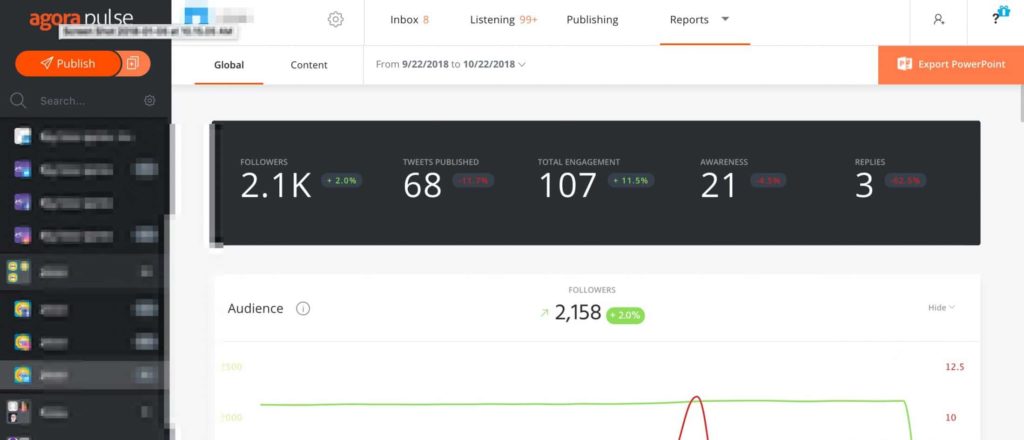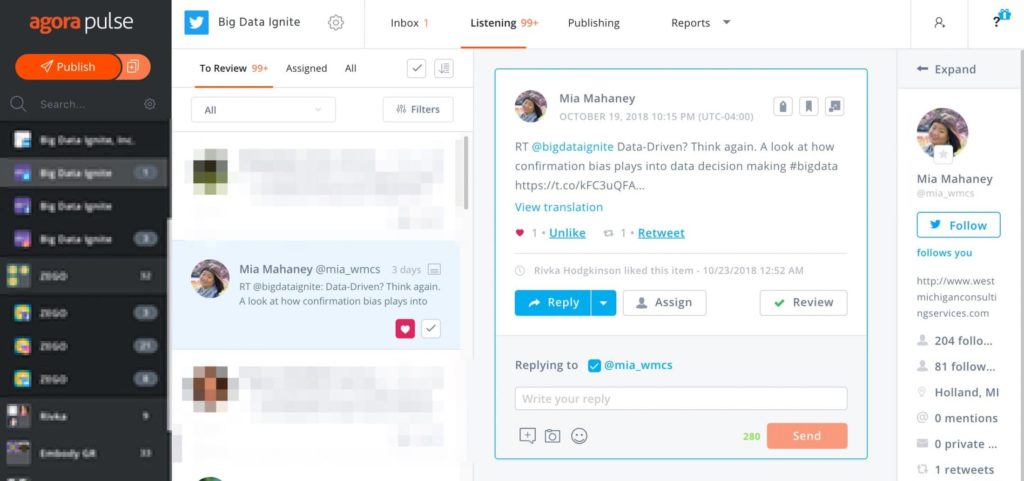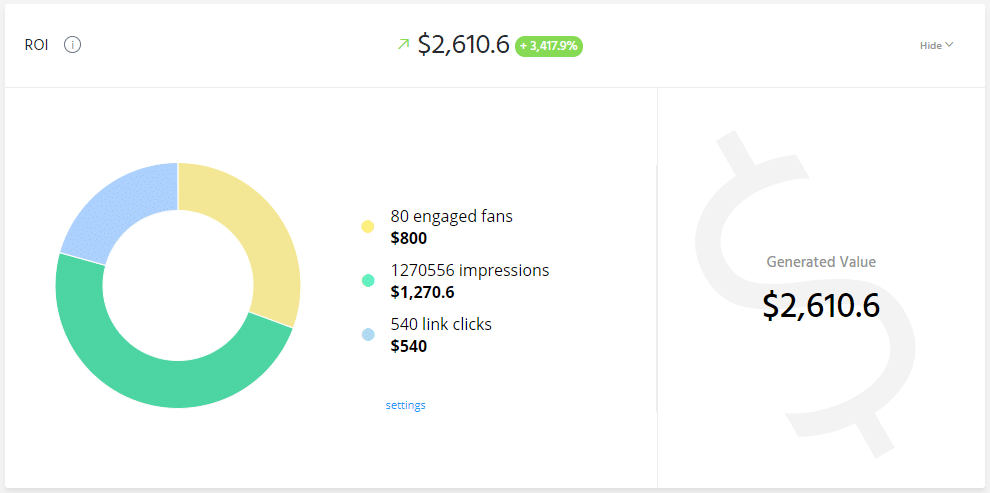Social media success means different things to different people. Yet everyone wants to know the answer to the ultimate question:
Am I successful on social media?
There is no single right or wrong answer. The first step is to understand what your social media goals are and measure against them.
There are three primary purposes for social media. While most businesses would love to do all three, often the focus is on one or another.
These goals are:
- Social Proof
- Customer Service
- Sales and/or Conversions
Each one of these primary goals has different metrics of success on social media and is measured in different ways. How many of these you will be able to successfully execute depends on the resources you have for your business or agency, your priorities, and how well your team is able to coordinate efforts.
Using Social Media for Social Proof
What did you do the first time you built a social media marketing strategy? Most of us looked at what everyone else was doing and used it as a guide. This phenomenon was identified (and coined) by psychologist Dr. Robert Cialdini in the 1980s.
One of the most common interpretation of social proof” is measuring success against the number of followers– because it’s an easy to see (and copy) metric.
This is a solid strategy for a primary success metric if you are:
- A brand new company that wants to add legitimacy
- Positioning your business as an influencer
- Readying for a promotion and want your social media to be considered one of your assets
How many followers are enough? And how do you measure your total social media influence?
There is no single right answer for what will give you the social proof to be “successful.” But here are some guidelines:
- What are the key metrics of your closest competitors?
- How are your customers evaluating you online?
- What are the statistics for the industry leaders?
These will give you the data for what success may look like.
To make comparison easy, Agorapulse has a wide range of tools available. First, make sure that you are doing regular reporting so that you can see your follower growth over time. Then when you try new content or implement new ad strategies you can see the direct results to your social media followers, comments, and reviews.
Make sure you track your competitors as well so you can see how your results stack up.
Customer Service
My very first social media marketing client was a service company. This particular company was struggling to keep the clients that they already had. I said, “there is this brand new thing called Facebook that I think might help.” It is still true now that social media can be a fantastic customer service tool.
As more and more people go to Facebook pages and Twitter accounts as their first source for help with a customer service problem, you will want to make sure you are set up for success. Use:
- Automated replies when helpful
- Social media team strategies for effective communication
- Saved replies to save time
It’s critical that you don’t miss any important communications. While many messages from customers may come into your inbox on social media, some other may come in mentions. Using Agorapulse’s listening feature can help you catch all these.
Set specific targets that you want to measure your success against, such as:
- Speed of response time
- Customer satisfaction surveys
- Engagement on social media
- Customer retention
Sales and/or Conversions
The final goal that you may want to track when determining your social media success is sales or conversions. And no, those are not the same thing. Conversion means completing goal such as:
- Email list signups
- Surveys filled out
- Click through to website
And those are just the main ones. If you are trying to get someone to do something other than engage directly on social media, or solve a customer service problem, then you are trying to impact conversion.
Again, success looks different depending on what industry you are working in. You might not always have good data for industry wide averages, or for your competitors on this one. However, you can still compare success to your other more traditional advertising and marketing avenues to see how social media stacks up.
In order to measure social media success for sales, you will want to combine your social media reports with a tool like Google Analytics in order to track how your social media efforts are turning into sales.
Social Media Success and ROI
Ideally, all methods of social media success should lead to a positive ROI (return on investment) for your organization. Some are harder to track than others.
For example, sales are pretty easy to measure. If you spend $1,000 in social media efforts a month, and you make $10,000 in sales as a direct result, you know your ROI without doing too much work.
But what about if you are working for more email list signups? Or if you want to improve customer retention? You have to be able to track the whole sales funnel and see what impact additional spending has on your set outcomes.
It is easier to do this kind of analysis when your organization has been consistently tracking information for a period of time. In that case, you can easily see what happens when you make social media changes. But if you are tracking other business outcomes and social media activities all at the same time other things like seasonality can play a role.
Once you set your own metrics for success, and the value they have to your organization, you will even be able to set these in your Agorapulse reporting so that you can view ROI directly in your social media success measurement.
How Do You Think You Are Doing?
How are you measuring social media success in your business or agency? Have you been consistently reviewing and updating how you are doing? What will you do differently now? Let me know in the comments below!









